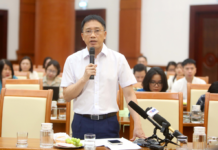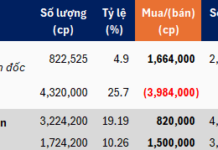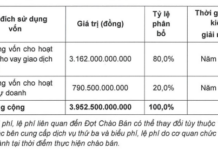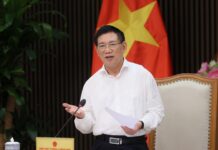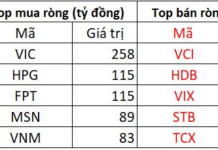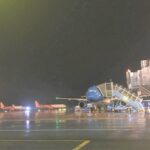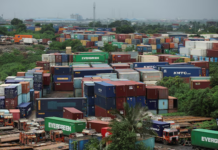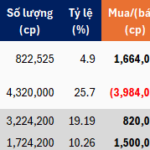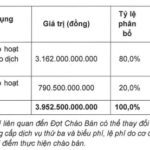During the National Assembly session on the afternoon of November 12th, regarding the draft amendment to the Law on Civil Aviation of Vietnam, Minister of Construction Tran Hong Minh stated that from now until 2030, Vietnam will have 32 airports meeting the 4E standard or higher, an increase of 10 airports compared to the current number. By 2050, there will be 34 airports meeting this standard.
According to the International Civil Aviation Organization (ICAO), a 4E airport is one with a runway length requirement of 1,800 meters or more, suitable for long-haul flights, and capable of accommodating aircraft with wingspans ranging from 52 meters to under 65 meters. The distance between the centers of the outermost wheel tracks of the main landing gear should be between 9 meters and under 14 meters.
The Minister of Construction noted that the planning locations of these airports must comply with international regulations and meet the 4E airport standard or higher, with runways having a minimum length of 1,350 to 1,800 meters.
Significant Funding Required, Socialization Needed
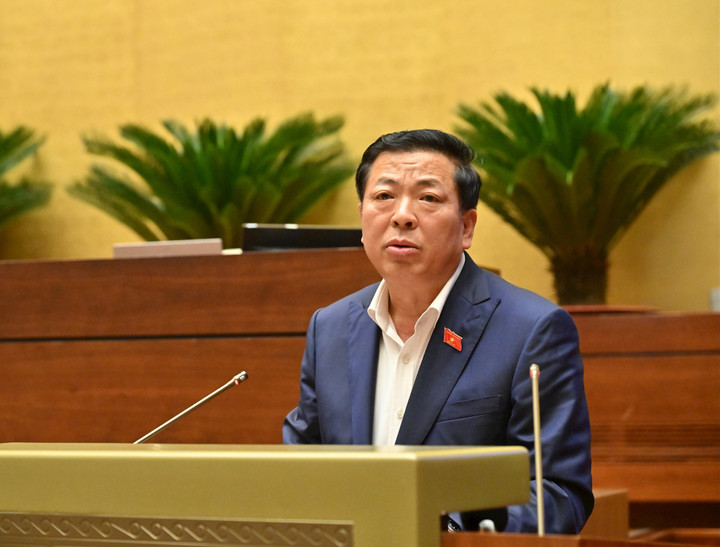
Minister Tran Hong Minh at the National Assembly session on the afternoon of November 12th. (Photo: National Assembly Media)
Regarding airport planning, the Minister mentioned that Vietnam currently has 22 airports formed and developed over multiple stages. Most of these were converted from military airfields into civil airports, with some serving international flights.
The Northern region has 7 airports, 3 of which meet international standards; the Central region has 7 airports, 3 of which can handle international flights but only for smaller aircraft. The Southern region has 8 airports, 4 of which meet the standards for international flights.
For the 2021-2030 planning period, with a vision to 2050, Minister Tran Hong Minh stated that the Ministry of Construction has closely coordinated with other ministries and sectors to develop a national airport system plan. However, to keep up with the country’s development, timely adjustments and additions to the aviation development plan are essential.
“Currently, according to the Civil Aviation Authority’s calculations, the total resources allocated for the airport system until the end of 2025 are approximately 4,120 billion VND, and from 2025 to 2030, around 5,712 billion VND. These funds are primarily for upgrading, maintaining, and repairing existing airports.
Furthermore, out of the 22 airports nationwide, only 3-4 meet the 4F international standard; the majority are still at the 4C level. Therefore, runways at many airports still do not meet the operational requirements of international airlines,” the Minister said.
Regarding construction investment, he noted that due to our low starting point and the challenges faced over the years, funding is the biggest issue, requiring the mobilization of social resources.
Implementing Resolution No. 68 of the Politburo on private economic development, many aviation projects have recently mobilized social resources, such as Gia Binh Airport and Phu Quoc Airport, which were invested according to international standards to serve the APEC Summit and major diplomatic activities.
Reasons for Only 65% On-Time Flights
Regarding the carrier’s responsibility in cases of delays or cancellations, Minister Tran Hong Minh stated that according to statistics from the first 10 months of 2025, Vietnamese airlines operated approximately 480,000 flights, transporting 47 million passengers, higher than the same period last year. However, the on-time flight rate was only 65%, a 9 percentage point decrease.
According to the Minister, the causes include both subjective and objective factors such as weather, aircraft shortages, supply chain disruptions, airport infrastructure limitations, and high flight density…
“Airlines do not want this situation because they also feel the pain of fuel costs when circling in the sky. The draft law clarifies the responsibilities of all parties to minimize delays and cancellations as infrastructure improves in the future,” said the Minister of Construction.
Regarding aviation fees and mechanisms for aviation authorities, currently, according to the International Civil Aviation Organization (ICAO) requirements under the Chicago Convention, each member state must have an independent aviation authority with sufficient authority and resources to oversee aviation safety and security.
However, in reality, fees collected from aviation activities are still fully submitted to the state budget, which does not ensure autonomy for aviation authorities. This also fails to ensure timely international negotiations, route network expansion, and effective use of national resources.
This causes delays in investing in and developing science and technology to serve national aviation safety and security programs according to ICAO standards. It also fails to ensure funding for training, coaching, and remuneration for aviation safety supervisors—a high-quality workforce playing a particularly important role.
Therefore, the Minister emphasized the need to allow Vietnamese aviation authorities and aviation security authorities to retain a portion of the collected fees. This would support civil servants, enhance workforce quality, promote international cooperation, and invest in infrastructure and technology for aviation safety and security. The drafting agency proposes including this content in the draft law.
Additionally, in Conclusion No. 83 dated June 21, 2024, the Politburo directed the Government Party Committee to instruct relevant ministries, sectors, and agencies to review the entire legal framework. This is to propose amendments or abolitions of special financial and income mechanisms to suit the new situation.
Based on this, the drafting agency will coordinate with relevant agencies to report and seek opinions from competent authorities on monthly support for functional forces in the aviation sector.
Regulating Unmanned Aerial Vehicles
Clarifying opinions on low-altitude air transport, Minister of Construction Tran Hong Minh stated that the application of unmanned aerial vehicles and other aircraft is increasingly common. This opens up new economic activities in fields such as transport, tourism, agriculture, communication, entertainment, and especially terrain surveying.
However, this is an area where most developed countries are still in the experimental and research phase, with very strict management and supervision mechanisms linked to national defense and security requirements.
This draft law only lays the legal foundation for the formation and development of a low-altitude aviation economy. It provides a basis for the Government to issue specific regulations during implementation, aligning with socio-economic development and ensuring national aviation security and safety.
Emphasizing that safety and security management is the top priority, the Minister stated: “Only when all aircraft are fully managed—from purpose of use and flight paths to the type of goods or passengers carried—can we ensure aviation safety and national security.”
In the future, the Ministry of Construction will closely coordinate with the Ministry of National Defense, the Ministry of Public Security, and the Government to detail and specify regulations related to low-altitude aviation activities.
Avoiding Scattered Airport Investments
Earlier, during the discussion, Delegate Pham Van Hoa (Dong Thap Province) expressed concern about airport planning, calling it a critical issue. Currently, the country has 34 provinces and cities, with some having two airports, partly due to historical reasons.
He suggested calculating and adjusting planning to ensure effective exploitation and avoid scattered, wasteful resource allocation.
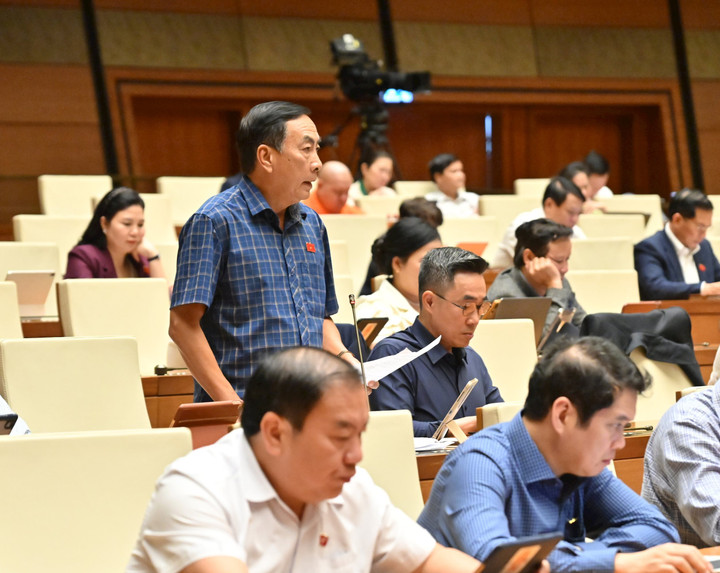
Delegate Pham Van Hoa. (Photo: National Assembly Media)
The delegate emphasized focusing investment on upgrading and expanding airports in favorable locations with tourism and service development potential to increase international visitor attraction. This would avoid scattered, piecemeal planning and investment, leading to inefficiency.
During airport planning and adjustments, careful consideration should be given to prioritizing resources for densely populated areas and economic-tourism centers. New airport openings in localities without real demand should be limited to ensure investment efficiency and sustainable development of the national airport network.
Also concerned about airport planning and investment, Delegate Thach Phuoc Binh strongly agreed with the policy of socializing aviation infrastructure investment. However, to ensure efficiency and transparency, airport planning should be reviewed and adjusted every 5 years or when significant changes occur.

Delegate Thach Phuoc Binh. (Photo: National Assembly Media)
Additionally, he suggested establishing a special public-private partnership mechanism for large airports with both civil and defense functions, such as Long Thanh and Tan Son Nhat Airports. This would clearly define responsibilities, benefits, and coordination mechanisms between the state and investors.
Simultaneously, asset valuation and transfer procedures should be simplified, with increased independent auditing, information transparency, and accountability to avoid overlaps and conflicts of interest in aviation infrastructure investment and operation.
Soaring High with VJC: The Aviation Industry’s Rising Star (Part 2)
Despite lingering challenges that require attention in the coming period, Vietjet Aviation Joint Stock Company (HOSE: VJC) continues to captivate the investment community with its strong appeal. According to valuation model results, VJC’s stock price remains attractive for long-term investment opportunities.









